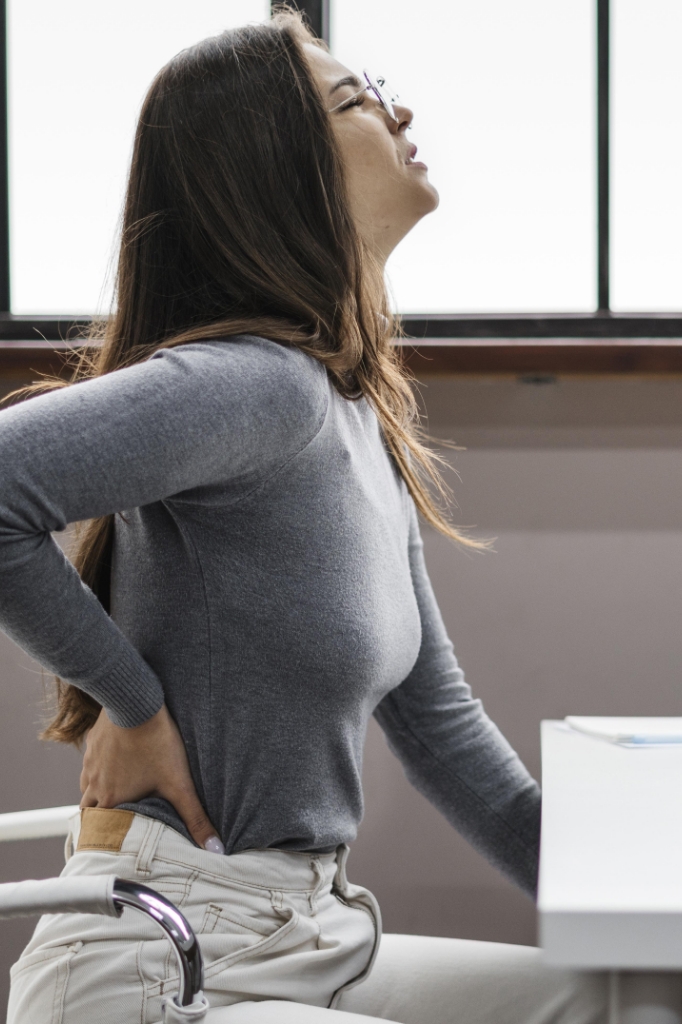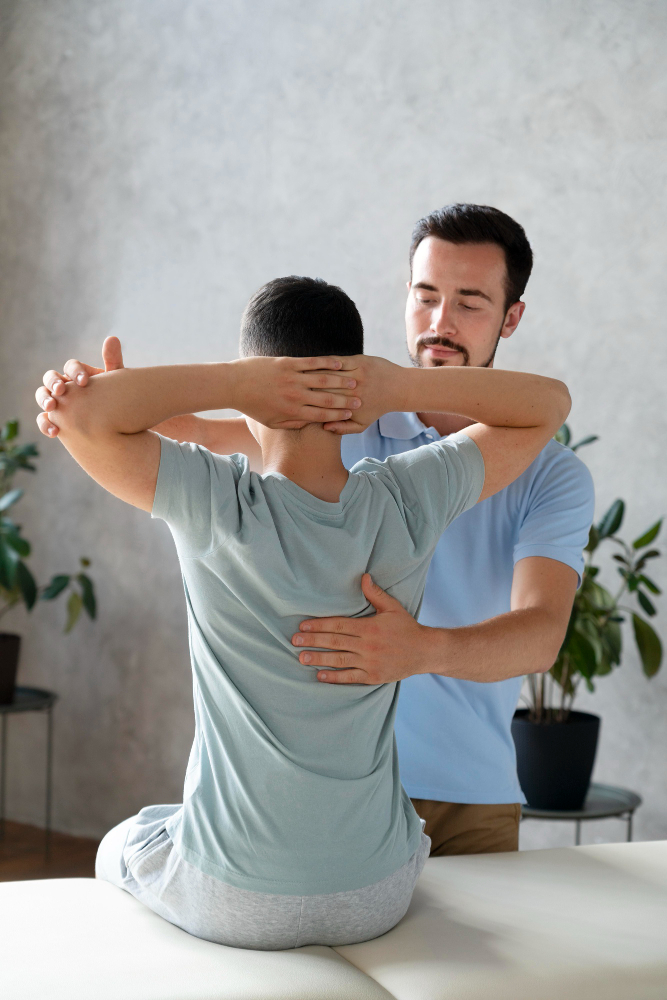Spinal Conditions
Kyphosis
Kyphosis is an excessive outward curvature of the spine, defined as measuring 50 degrees or more on an X-ray and called ‘hunchback’ or ‘round back’.

What causes kyphosis?
Several different types exist, caused and influenced by different factors.
Postural kyphosis is the most common type, usually noticeable in early adolescence. It develops from consistently poor posture, which trains the muscles to hold the spine in an unusual position and can be temporarily rectified by sitting up straight.
Congenital kyphosis is caused by a malformed vertebra and is present at birth. This type generally requires surgery at a very young age to halt the curve’s progression and allow normal development.
Other types can result from damage to the vertebra caused by age, injury, and illness. Osteoporosis, in particular, can cause this type, known as secondary structural kyphosis, as it is caused by another medical condition. Postmenopausal women are at risk of developing this type.

Symptoms
People suffering from kyphosis may experience the following:
- Back pain
- Digestive problems
- Breathing difficulties
- Reduced movement in the spine
- A hunched appearance
- Differences in shoulder height or position
- Tight hamstrings
How is kyphosis diagnosed?
Kyphosis is usually noticeable to the naked eye as you go about your daily life. However, Dr Alvin Pun or your GP may recommend tests to assess its severity and optimise your treatment.
These tests may include:
X-ray and/or CT Scans
Are often conducted to grade the curvature. An X-ray alone is usually enough to diagnose kyphosis. Repeat scans may be performed to assess the curve’s progress or determine a treatment’s effectiveness.
MRI
May be used to assess the impact of kyphosis on the spinal cord and nerves, particularly if you experience tingling in the limbs or other nerve symptoms
CT scan
As kyphosis can be caused by conditions such as osteoporosis, a bone density test may be used to assess the risk of progression.
Treatment
Treating kyphosis aims to prevent the spine’s curve from increasing and minimise any pain or nerve symptoms. This is often done without surgery, particularly if treatment begins in childhood.
Dr Pun may recommend one or more of the following:
- Pain relief – typically in the form of over-the-counter painkillers, though your doctor may offer prescription pain relief if this is ineffective.
- Osteoporosis/bone density medications – if your kyphosis is influenced by osteoporosis, medications that improve your bone density may be recommended to reduce the risk of progression.
- Physiotherapy – a qualified physiotherapist may recommend exercises to improve posture, reduce pain, and preserve mobility. They also aim to strengthen the core and stretch the back’s extensor muscles.
- Bracing – wearing a body brace may be recommended for children especially. This can stop the condition while the bones are still growing.
If nonoperative management does not provide relief as anticipated, the surgical option is spinal fusion. This involves securing two or more vertebrae together using metal rods, screws and hooks to decrease the spine’s curvature.
